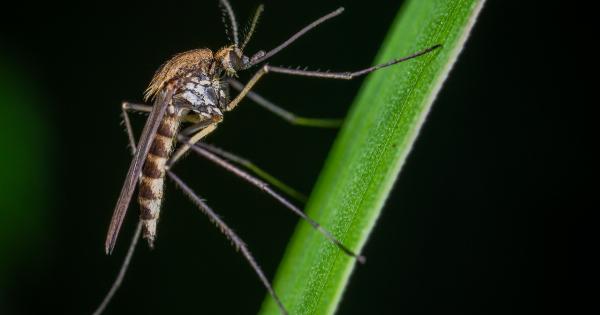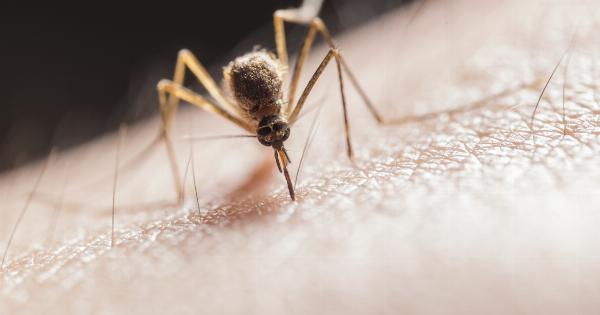As pet owners, it is our responsibility to keep our furry friends safe and protected from various threats, including pests. Pests such as fleas, ticks, and mosquitoes not only annoy our beloved pets but can also pose serious health risks to them.
In this article, we will discuss some effective measures that you can take to ensure the well-being of your pets by keeping them safe from pests.
1. Regular Veterinary Check-ups
Regular visits to the veterinarian are essential for the overall health of your pets.
Apart from routine vaccinations and examinations, your veterinarian can also recommend the most suitable pest prevention methods based on your pet’s specific needs. They can help you choose the right flea and tick prevention products or prescribe necessary treatments in case of an infestation.
2. Flea and Tick Control
Fleas and ticks are common external parasites that can cause severe discomfort and transmit diseases to your pets. To keep these pests at bay, you should invest in regular flea and tick control methods.
These may include spot-on treatments, oral medications, or flea and tick collars. Ensure that such products are safe for your pet’s species, age, and weight. Regularly check your pet’s coat for any signs of infestation, and consult your veterinarian if you notice any issues.
3. Mosquito Prevention
Mosquitoes are not only a nuisance but can also transmit heartworm disease to dogs and cats. This potentially fatal condition can be prevented by using mosquito repellents specifically designed for pets.
Additionally, avoid leaving standing water in your yard, as it attracts mosquitoes. Keep your pet indoors during peak mosquito activity times, such as dawn and dusk.
4. Regular Grooming
Regular grooming sessions not only help keep your furry friends looking their best but also aid in pest prevention. Brushing your pet’s coat helps to remove loose hair, dirt, and potential pests.
Additionally, it allows you to inspect your pet’s skin for any signs of flea dirt, ticks, or other skin issues. Proper grooming also helps distribute natural oils, which can enhance the coat’s natural pest-resistant properties.
5. Clean Living Environment
Maintaining a clean living environment is crucial in preventing and controlling pests. Regularly vacuuming your home, washing your pet’s bedding, and keeping the surrounding areas clean reduces the risk of flea and tick infestations.
Pay special attention to carpeted areas, cracks, and crevices where pests can hide. Use pet-safe cleaning products and consult your veterinarian for recommendations on effective pest control sprays or powders.
6. Yard Maintenance
Keeping your yard well-maintained is as important as maintaining cleanliness inside your home. Mow the grass regularly, remove any debris, and trim overgrown bushes and shrubs.
This helps eliminate hiding spots for pests and reduces the chances of your pet picking up fleas, ticks, or other parasites while spending time outdoors.
7. Tick Checks
Ticks can latch onto your pet while they explore the outdoors, posing a risk of disease transmission. After returning from walks or outdoor adventures, thoroughly check your pet for any ticks.
Pay special attention to areas like the armpits, ears, groin, and between the toes. If you find any ticks, carefully remove them with tweezers or a tick removal tool. Avoid squeezing the body of the tick, as it may lead to the release of disease-causing pathogens. Dispose of the tick properly.
8. Maintaining a Pest-Free Diet
A well-balanced and nutritious diet plays a significant role in maintaining your pet’s overall health and immunity. A strong immune system can help your pet fight off pests and reduce the risk of infestations.
Consult your veterinarian to ensure that your pet is on a diet that meets their nutritional needs and supports their immune system.
9. Pet-Friendly Pest Control
If you need to use pest control products in and around your home, make sure they are pet-friendly. Before applying any treatments or chemicals, remove your pets from the area and follow the instructions provided by the manufacturer.
It’s important to use pest control methods that are safe for your pets to avoid accidental poisoning or other adverse effects.
10. Regular Health Monitoring
Lastly, keep a close eye on your pet’s behavior and general well-being. Monitor their eating habits, energy levels, and any unusual signs or symptoms.
Regular health monitoring can help detect any potential pest-related issues early on, allowing for prompt intervention and treatment.





























